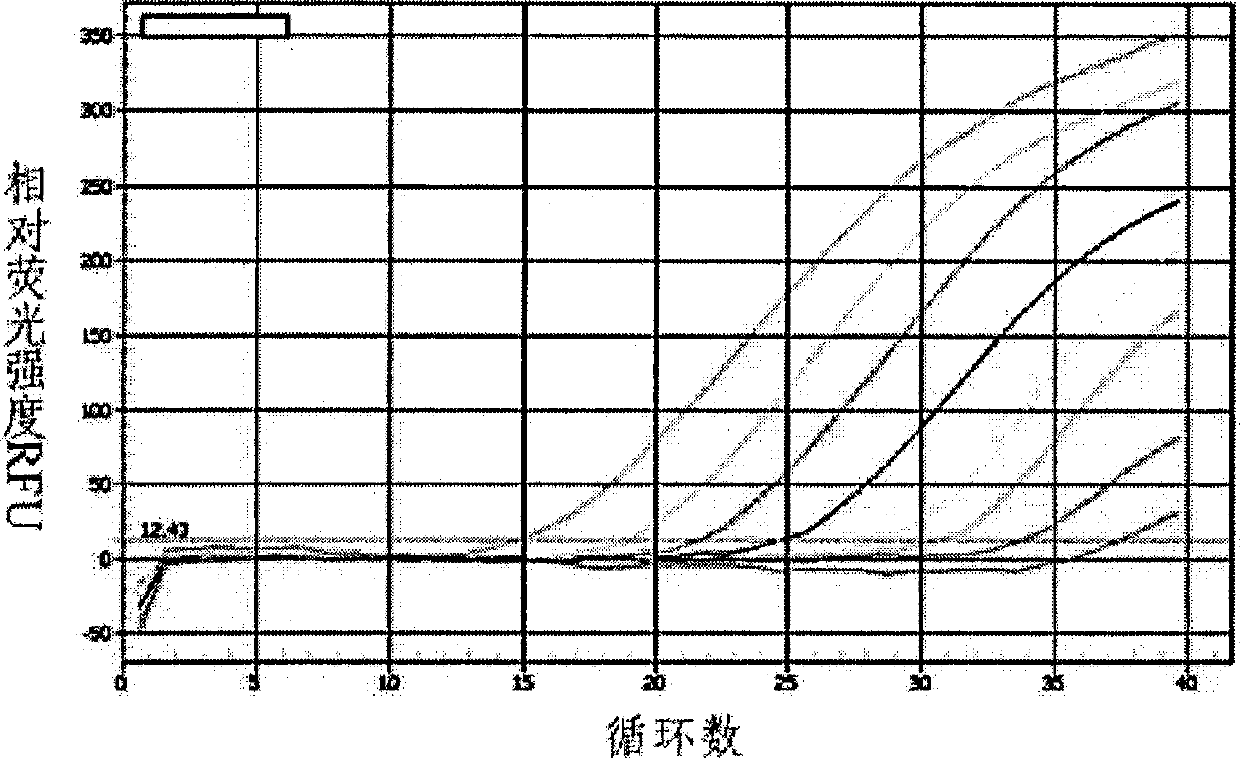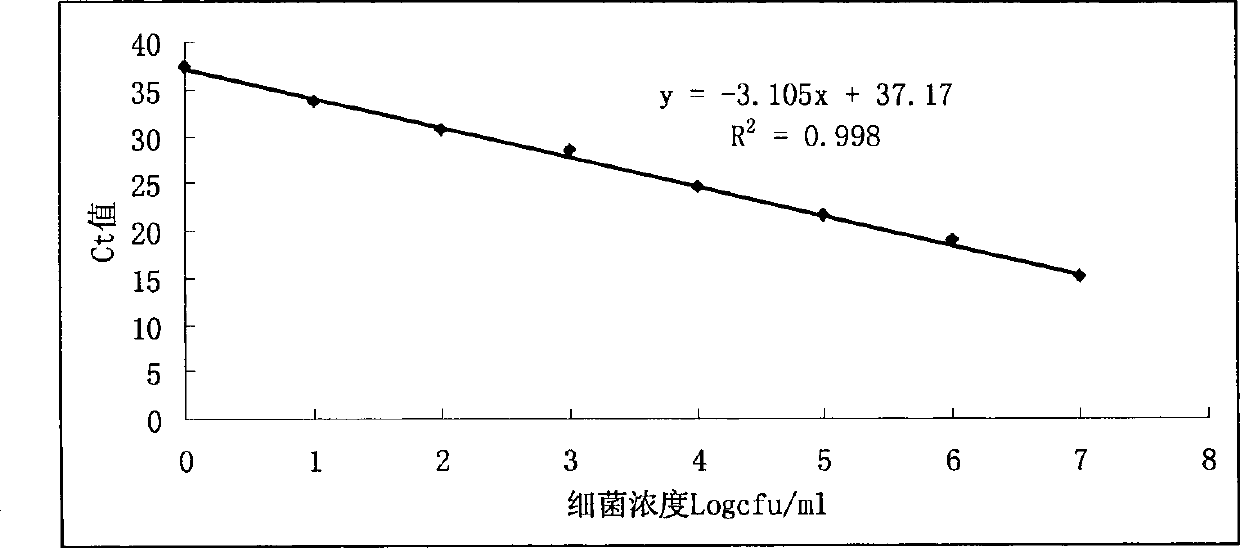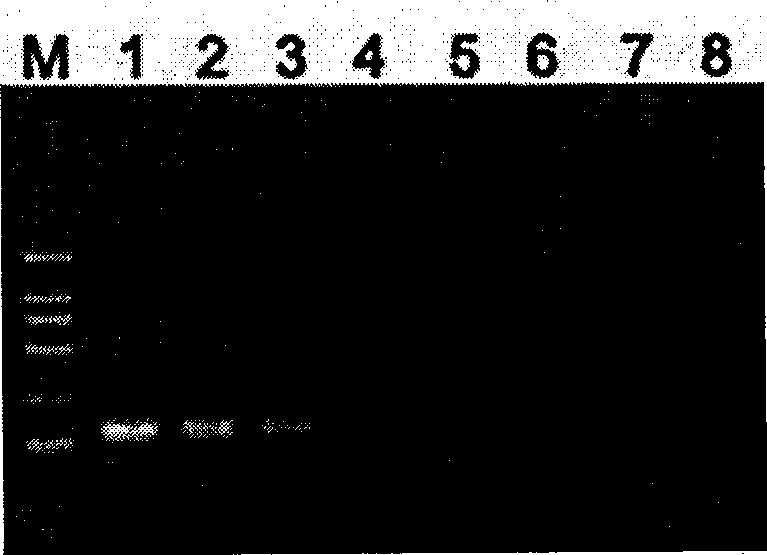Fluorescent quantitative PCR method by using taqman probe for detecting salmonella in food
A Salmonella, fluorescence quantitative technology, used in biochemical equipment and methods, microbial determination/inspection, resistance to vector-borne diseases, etc., can solve the problems of unseen, minimum detection limit and quantification limit, etc. Short, specific effects
- Summary
- Abstract
- Description
- Claims
- Application Information
AI Technical Summary
Problems solved by technology
Method used
Image
Examples
Embodiment 1
[0055] 1. Design and synthesis of primers and Taqman probes
[0056] The fimY gene sequences of Salmonella from various sources were obtained from GenBank, and the gene sequences were analyzed by Primer Express software. According to the design principles of primers and probes, a pair of 135bp-capable amplified target fragments was screened in the conserved regions of these sequences. Primers, and design a fluorescent probe in the amplification region of the primers. The fluorescent reporter group labeled at the 5' end of the probe is FAM, and the fluorescent quencher group labeled at the 3' end is TAMRA, which was synthesized by Shanghai Jikang Bioengineering Technology Service Co., Ltd.
[0057] The sequences of the primer pairs are
[0058] F1 (forward primer): GCGCTACCTGTCTCCTGTATTGA;
[0059] F2 (reverse primer): ACGCCCAGCCATACGGATA;
[0060] The probe sequence is
[0061] FP3AGCTACGCGCGCTCAGTTGGCA;
[0062] Wherein: the 5' end of the FP3 probe is marked with a FAM f...
Embodiment 2
[0071] 1. Quantitative PCR detection of food samples artificially inoculated with Salmonella
[0072] (1) Preparation of artificially inoculated samples
[0073] A. Sample treatment without shell eggs: Scrub the eggs with a hard brush under a stream of water. Soak clean eggs in 200ppm chloride ion solution containing 0.1% sodium dodecylsulfonate (SDS) for 30min. A 200 ppm cl- / 0.1% SDS solution was prepared by adding 8 mL of 5.25% sodium hypochlorite to 992 mL of distilled water containing 1 g of SDS. This disinfectant needs to be prepared extemporaneously before use. Aseptically open the eggs and homogenize. Aseptic operation Weigh 10 g of the homogenate into a sterilized 250 ml Erlenmeyer flask. Add 90ml of buffered peptone water and vortex to mix well.
[0074] Table 1 Stability detection of Salmonella detected by TaqMan PCR
[0075]
[0076] Table 2 Interday coefficient of variation of Salmonella detected by TaqMan PCR
[0077]
[0078] B. Whole egg sample ...
PUM
 Login to View More
Login to View More Abstract
Description
Claims
Application Information
 Login to View More
Login to View More - Generate Ideas
- Intellectual Property
- Life Sciences
- Materials
- Tech Scout
- Unparalleled Data Quality
- Higher Quality Content
- 60% Fewer Hallucinations
Browse by: Latest US Patents, China's latest patents, Technical Efficacy Thesaurus, Application Domain, Technology Topic, Popular Technical Reports.
© 2025 PatSnap. All rights reserved.Legal|Privacy policy|Modern Slavery Act Transparency Statement|Sitemap|About US| Contact US: help@patsnap.com



